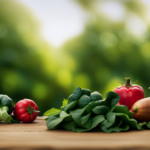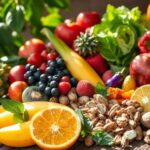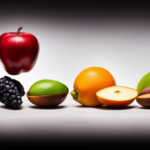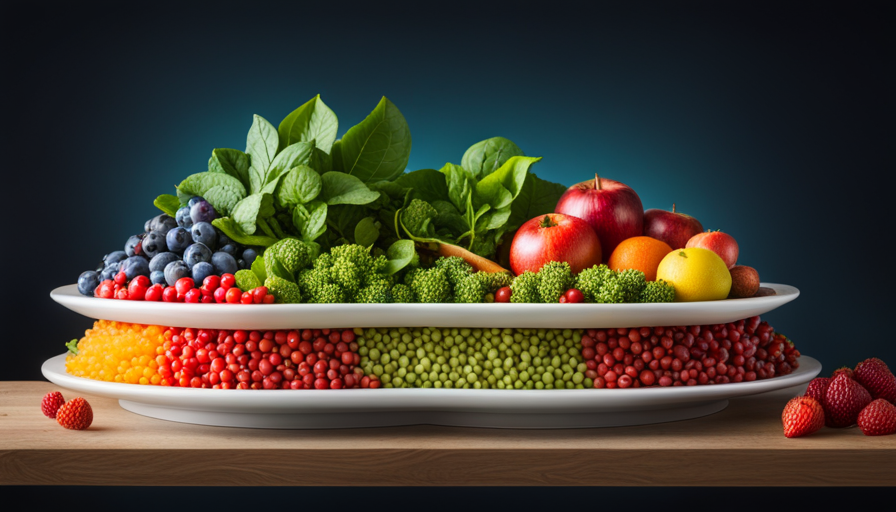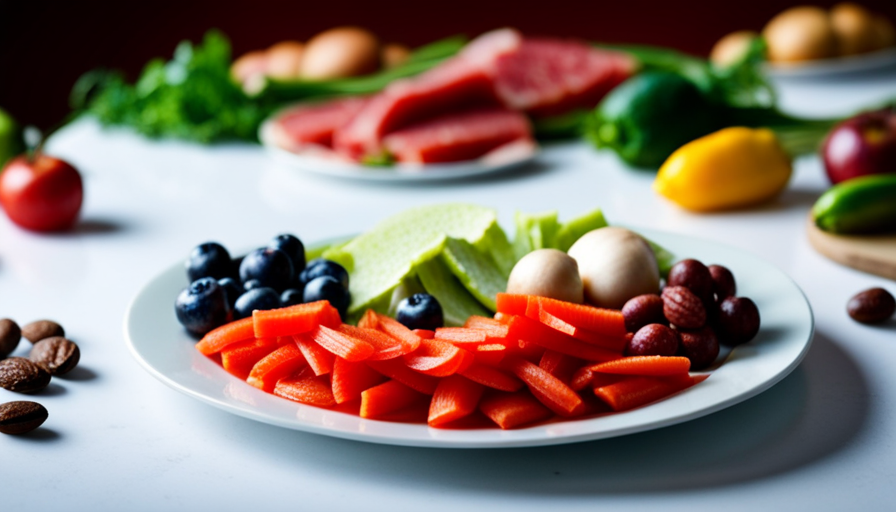Ah, the raw food diet. It’s the latest trend in the health and wellness sector, promising glowing skin, boundless energy, and a body as pure as newly fallen snow. Have you ever pondered the beginnings of this trendy diet? Let me take you back to the late 1800s, when Swiss physician Dr. Maximilian Bircher-Benner first brought the concept of raw foodism to the forefront.
Yes, you heard that right – it’s been around for over a century! In this article, we’ll delve into the origins of the raw food diet, explore its philosophy, and discover the health benefits that proponents claim it offers. But before we dive in, let’s take a moment to consider the evolution of this diet and how it has changed over the years.
So grab a carrot stick, sit back, and get ready to learn all about the fascinating history of the raw food diet.
Key Takeaways
- The raw food diet originated in the late 19th century with Dr. Maximilian Bircher-Benner.
- The diet is based on the belief that raw foods contain vital enzymes and nutrients that are destroyed through cooking.
- Advocates of the raw food diet argue that it can lead to improved digestion, energy levels, and overall well-being.
- Scientific research suggests that cooking can actually enhance the bioavailability of certain nutrients, and raw food is not always more nutritious than cooked food.
The Pioneering Work of Dr. Maximilian Bircher-Benner
Let’s take a look at the groundbreaking work of Dr. Maximilian Bircher-Benner and how he revolutionized the raw food diet! Dr. Bircher-Benner was a Swiss physician who conducted pioneering research on the benefits of a raw food diet in the early 20th century. His work had a significant impact on modern nutrition and laid the foundation for the raw food movement that we see today.
Dr. Bircher-Benner believed that raw fruits, vegetables, nuts, and seeds contained vital enzymes and nutrients that were destroyed during cooking. He argued that consuming these foods in their natural state could improve digestion, boost energy levels, and enhance overall health. To support his claims, he conducted numerous experiments and observed positive outcomes in his patients.
One of Dr. Bircher-Benner’s most notable contributions was the creation of a famous raw food recipe called ‘Bircher muesli.’ This dish consisted of raw oats, grated apples, nuts, and lemon juice, and it quickly gained popularity as a nutritious and delicious breakfast option.
Dr. Bircher-Benner’s pioneering research and advocacy for the raw food diet paved the way for further exploration into the health benefits of consuming raw foods. Now, let’s delve into the late 19th-century origins of the raw food diet.
The Late 19th Century Origins of the Raw Food Diet
The late 19th century saw a surge in popularity for consuming uncooked and unprocessed ingredients, with many individuals embracing this alternative lifestyle choice. The origins of the raw food diet can be traced back to this time period, when people began to question the health benefits of cooking and processing food.
It was during this era that the idea of consuming raw fruits, vegetables, nuts, and seeds gained traction. One of the key figures in the development of the raw food movement was Maximilian Bircher-Benner, a Swiss physician who believed that raw foods contained vital nutrients that were lost during cooking. Bircher-Benner advocated for a diet rich in fruits, vegetables, and whole grains, and he even created a raw food dish known as ‘Bircher muesli,’ which is still popular today.
The late 19th century marked a turning point in the way people perceived food and its impact on health. The raw food diet gained followers who believed in its ability to improve digestion, boost energy levels, and promote overall well-being. This shift in thinking laid the foundation for the philosophy behind raw foodism, which will be explored in the next section.
Transitioning to the subsequent section about the philosophy behind raw foodism, we delve into the principles that guide those who adhere to this dietary lifestyle.
The Philosophy Behind Raw Foodism
Maximilian Bircher-Benner’s belief in the power of vital nutrients found in uncooked and unprocessed ingredients revolutionized the way people viewed nutrition, paving the way for a new dietary philosophy centered around the principles of raw foodism. Raw foodism is based on the belief that heating food above a certain temperature destroys essential enzymes and nutrients, leading to a decline in health. Advocates of raw foodism argue that consuming a diet primarily consisting of raw fruits, vegetables, nuts, seeds, and sprouted grains can provide numerous health benefits.
To better understand the philosophy behind raw foodism, let’s take a look at the following table:
| Philosophy Behind Raw Foodism | Benefits of Raw Food Diet |
|---|---|
| Emphasizes whole, unprocessed foods | Increased nutrient intake |
| Preserves enzymes and natural compounds | Improved digestion |
| Supports a sustainable and eco-friendly lifestyle | Enhanced energy levels |
| Promotes alkalinity in the body | Weight loss and maintenance |
| Encourages mindful eating | Reduced risk of chronic diseases |
By adhering to the raw food diet, individuals aim to maximize their nutrient intake, improve digestion, boost energy levels, achieve weight loss or maintenance, and reduce the risk of chronic diseases. The health benefits of a raw food diet will be explored in further detail in the next section, highlighting the positive impact it can have on overall well-being and vitality.
The Health Benefits of a Raw Food Diet
One of the key advantages of adopting a raw food lifestyle is the potential for increased nutrient absorption and improved digestion. When we consume raw foods, such as fruits, vegetables, nuts, and seeds, they retain their natural enzymes and beneficial bacteria that aid in the breakdown and absorption of nutrients in our bodies.
This means that we can effectively extract more vitamins, minerals, and antioxidants from our food, leading to a higher nutrient intake.
The science behind raw food diets supports these claims, as studies have shown that cooking can cause the loss of certain heat-sensitive nutrients, such as vitamin C and some B vitamins. Additionally, raw foods tend to be high in fiber, which promotes healthy digestion and can prevent constipation.
However, it is important to address some common misconceptions about raw food diets. While it is true that cooking certain foods can enhance their nutrient availability, it is also true that raw food diets can provide a wide range of essential nutrients. By consuming a variety of raw fruits, vegetables, nuts, and seeds, individuals can meet their nutritional needs.
As we explore the evolution of the raw food diet, it becomes evident that this lifestyle has undergone significant changes over time.
The Evolution of the Raw Food Diet
Let’s take a journey through the ever-changing world of the raw food lifestyle and see how it has evolved over time, shall we? The raw food diet has undergone significant evolutionary changes since its inception.
Initially, it was popularized by prominent figures like Maximilian Bircher-Benner in the late 19th century, who believed that consuming raw, unprocessed foods was essential for good health.
Over the years, cultural influences have played a crucial role in shaping the raw food diet. For example, in the 1960s and 1970s, the hippie counterculture movement embraced raw foods as part of their rejection of mainstream society.
As time went on, the raw food diet began to gain traction among health enthusiasts and alternative medicine practitioners. Modern proponents of the raw food diet believe that it preserves the natural enzymes and nutrients found in food, leading to improved digestion, increased energy levels, and weight loss.
However, it is important to note that the raw food diet has its share of myths and misconceptions. Many people believe that cooking destroys all nutrients, but scientific research suggests that cooking actually enhances the bioavailability of certain nutrients. So, while the raw food diet may have its benefits, it is essential to separate fact from fiction when considering its adoption.
Now, let’s explore some of the common myths and misconceptions surrounding the raw food diet.
Raw Food Diet Myths and Misconceptions
Contrary to popular belief, cooking does not strip all nutrients from our meals, as scientific research has shown that it can actually enhance the bioavailability of certain essential nutrients. However, there are still many misconceptions surrounding the raw food diet that need to be debunked. People often believe that raw food is more nutritious than cooked food, but this is not always the case. While raw fruits and vegetables do contain beneficial enzymes and vitamins, cooking can actually increase the availability of certain nutrients, such as lycopene in tomatoes or beta-carotene in carrots.
To dispel some of these misconceptions, let’s take a look at the following table:
| Myth | Fact |
|---|---|
| Raw food is always healthier | Cooking can enhance nutrient absorption |
| Raw food is more natural | Cooking has been practiced for centuries |
| Raw food is the only way to detox | Our bodies have natural detox mechanisms |
| Raw food is the best for weight loss | Balanced diets and exercise are key |
It is important to note that incorporating raw foods into your diet can still be beneficial, but it doesn’t have to be the sole focus. By combining raw and cooked foods, you can enjoy a variety of flavors and textures while ensuring optimal nutrient intake.
Tips for Incorporating Raw Foods into Your Diet
To truly savor the vibrant flavors and nourishing benefits of nature’s bounty, embrace the adventure of incorporating raw foods into your daily meals. Transitioning to a raw food diet can be an exciting journey towards optimal health and vitality. Here are some tips to help you find balance in a raw food diet:
-
Gradual Transition: Start by incorporating more raw fruits, vegetables, and nuts into your meals while gradually reducing cooked foods. This will allow your body to adjust and make the transition easier.
-
Variety is Key: Explore a wide range of raw foods to ensure you receive a diverse array of nutrients. Include fruits, vegetables, leafy greens, sprouts, nuts, seeds, and fermented foods in your diet.
-
Food Preparation: Experiment with different preparation methods such as blending, juicing, marinating, and dehydrating. These techniques can enhance the flavors and textures of raw foods.
-
Mindful Eating: Take the time to chew your food thoroughly and savor each bite. This can improve digestion and help you appreciate the natural flavors of raw foods.
Transitioning to a raw food diet can be a rewarding experience, but it’s important to be mindful of potential challenges and considerations. In the next section, we will explore the potential challenges and considerations of a raw food diet.
Potential Challenges and Considerations of a Raw Food Diet
Embrace the adventure of incorporating raw foods into your meals, and get ready for the potential challenges and considerations that come with it. While a raw food diet can offer numerous health benefits, it’s important to be aware of the potential challenges you may face along the way.
One of the main challenges is the need for careful meal planning and preparation. Raw food diets require a significant amount of time and effort to ensure a balanced and nutritious intake. Additionally, it can be difficult to find raw food options when dining out or attending social events.
Another consideration is the potential for nutrient deficiencies. Raw food diets often eliminate certain food groups, such as grains and legumes, which can make it challenging to obtain all the necessary nutrients. It’s important to ensure you’re getting enough protein, calcium, iron, and vitamin B12 from alternative sources.
Despite these challenges and considerations, many people have successfully embraced a raw food diet and experienced positive health outcomes. Transitioning into the subsequent section about ‘raw food diet success stories’, it’s inspiring to learn about the journeys of those who’ve found success in this lifestyle.
Raw Food Diet Success Stories
Transition: Despite the potential challenges and considerations of a raw food diet, there’ve been numerous success stories that highlight its benefits.
Current Subtopic: Raw Food Diet Success Stories
I’ve come across several inspiring success stories of individuals who’ve embraced a raw food diet and achieved remarkable results. One common theme among these stories is raw food diet weight loss. Many individuals have reported shedding those stubborn pounds and achieving their desired weight by adopting this diet. The high fiber content and low-calorie nature of raw foods can contribute to a feeling of fullness, thereby reducing overeating and aiding in weight loss.
Additionally, the raw food diet has also gained popularity among athletes. Raw fruits, vegetables, nuts, and seeds provide essential vitamins, minerals, and antioxidants that can enhance athletic performance. Many athletes have reported improved endurance, faster recovery times, and increased energy levels after transitioning to a raw food diet.
Incorporating an unordered 3-item bullet list:
- Weight loss: Many individuals have successfully achieved their weight loss goals by following a raw food diet.
- Athletic performance: Athletes have experienced enhanced performance and increased energy levels on a raw food diet.
- Improved overall health: Several success stories have highlighted improvements in digestion, skin health, and overall well-being.
As we explore the future of the raw food diet, it’s important to consider both its potential benefits and limitations.
Conclusion: The Future of the Raw Food Diet
Looking ahead, the raw food lifestyle holds promise for a healthier future. As technology continues to advance, it’s bound to have a significant impact on the raw food diet. With the rise of smart kitchen appliances and food tracking apps, it’s easier than ever to embrace this lifestyle. These tools can help individuals stay organized, plan meals, and ensure they’re getting all the necessary nutrients from their raw food diet.
Furthermore, social media has played a significant role in promoting the raw food diet. Platforms like Instagram and YouTube have become a hub for raw food enthusiasts to share their recipes, success stories, and tips. This has created a community of like-minded individuals who can support and inspire each other on their raw food journey.
However, it’s important to approach social media with caution. Not all information shared on these platforms is accurate or evidence-based. It’s crucial to do thorough research and consult with professionals before making any drastic changes to your diet.
The future of the raw food diet looks promising with the integration of technology and the support of social media. With the right tools and a supportive community, individuals can thrive on a raw food lifestyle and experience the health benefits it offers.
Frequently Asked Questions
What are some common misconceptions about the raw food diet?
There’s a lot of misinformation floating around about the raw food diet, so let’s clear things up.
One common misconception is that raw foodists only eat salads and nothing else. In reality, there are countless delicious and nutritious options available, from raw soups to desserts.
Another misconception is that a raw food diet lacks essential nutrients, but studies have shown that it can actually provide numerous health benefits, including improved digestion and increased energy levels.
So don’t be fooled by these misconceptions, give raw food a try and see the benefits for yourself.
Are there any potential health risks or considerations associated with a raw food diet?
There are potential risks and nutritional deficiencies associated with a raw food diet. Some potential risks include foodborne illnesses from consuming raw or undercooked foods, such as salmonella or E. coli.
Additionally, a raw food diet may lead to nutrient deficiencies, especially in vitamin B12, iron, calcium, and omega-3 fatty acids.
It’s important to carefully plan a raw food diet to ensure adequate nutrient intake and minimize potential health risks.
How can one successfully incorporate raw foods into their diet?
Incorporating raw foods into a balanced diet can be a delicious and healthy way to boost nutrition. Raw food recipes and meal ideas provide a variety of options to explore. From refreshing salads to creative smoothies, the possibilities are endless.
By gradually introducing raw foods into your meals, you can experience the benefits of increased energy, improved digestion, and enhanced overall well-being. So, why not add a little raw goodness to your plate today?
Are there any famous individuals who have had success with a raw food diet?
There have been several famous individuals who’ve had success with a raw food diet. Many celebrities, such as Demi Moore and Sting, have credited the raw food diet for their improved health and vitality. Success stories often include benefits such as weight loss, enhanced athletic performance, improved digestion, and a stronger immune system.
However, it’s important to note that transitioning to a raw food diet should be done carefully to avoid nutrient deficiencies, and it can also have positive effects on skin health.
What are some tips for maintaining a raw food diet in the long term?
Maintaining motivation and proper raw food meal planning are key to long-term success on a raw food diet. To stay motivated, set realistic goals, track your progress, and find support from like-minded individuals or online communities.
When it comes to meal planning, ensure a balanced intake of fruits, vegetables, nuts, and seeds to meet your nutritional needs. Experiment with different recipes and techniques to keep meals exciting and varied.
Stay focused, stay organized, and enjoy the benefits of a raw food lifestyle.
What is the history and origin of the raw food diet?
The history and origin of the raw food diet can be traced back to early human civilizations, where the consumption of uncooked, unprocessed foods was the norm. This diet has gained popularity in recent years, with many people citing graphs on raw food diet benefits as evidence of its health benefits.
Conclusion
In conclusion, the raw food diet has a rich history dating back to the late 19th century, thanks to the pioneering work of Dr. Maximilian Bircher-Benner. This philosophy of consuming uncooked, plant-based foods has gained popularity due to its numerous health benefits, including increased energy levels and improved digestion.
While there are potential challenges and considerations to be aware of, incorporating raw foods into your diet can be a transformative experience. As the saying goes, ‘You’re what you eat,’ and embracing a raw food lifestyle can lead to a vibrant and nourished body.



